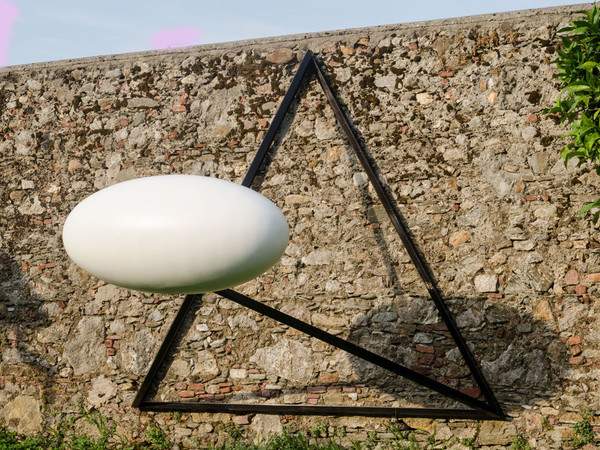In Pietrasanta a retrospective exhibition on sculptor Iginio Balderi
From July 27 to Sept. 28, 2019, the Giardino de l’Orangerie Spazio per l’Arte in Pietrasanta (Lucca) opens its exhibition season with a show entitled Geometries of Form, a retrospective on sculptor Iginio Balderi (Pietrasanta, 1934 - Milan, 2005). Balderi, an artist who has lived between Versilia, Milan and theNetherlands, is the protagonist of an exhibition project that represents the continuation of an exhibition dedicated to Balderi in 2018 and conceived by Open One Gallery in Pietrasanta in collaboration with Paola Raffo Arte Contemporanea Gallery and Palazzo Panichi as part of the Bozzetti in Vetrina exhibition, curated by art critic Andrea B. del Guercio.
Geometries of Form has thus become a traveling exhibition that presents different features each time while still maintaining the artist’s guidelines. On this occasion, Balderi’s works are not exhibited in a museum or gallery, but in the garden enclosed within the historic walls of the city of Pietrasanta and in the interior spaces of the Orangerie (whose name deliberately refers to the Musée de l’Orangerie in Paris), a structure located a stone’s throw from the city center, which hosts contemporary art projects from spring to fall.
The location is also meant to have historical recall with some of the venues where Balderi’s works were exhibited: for example, for an exhibition in 1984 the sculptures were displayed in the streets and squares of Monticchiello, a village in the Siena area. At the Giardino de l’Orangerie come nine sculptures in bronze, fiberglass and marble and a series of drawings, and the exhibition traces in summary, the artist’s evolutionary path: from the first columns of the 1960s, totems of plastic and sacred expression, to the evolutions of spirals in contemporary cities.
The egg, the spiral, the city, and the totem are archetypal symbols rooted in human history that Balderi reworks, with rigorous formal experimentation aimed at the search for universal symbolism. Also on display among the sculptures is a new work, S3 made by the artist’s heirs in iron and fiberglass using the original sketch, a sculpture that represents a variation on the theme of the Egg as a symbol of the origin of life. And again, D1, made in the 1970s in fiberglass, from the series Seven Variations on the Theme. A work that returns usable to the public for the first time after careful restoration.
Iginio Balderi, who was born in 1934 in Pietrasanta and passed away in Milan in 2005, graduated in 1959 from theBrera Academy of Fine Arts with the great master Marino Marini.During the 1960s, he pursued formal research related to the archetype of the column, which culminated, in 1969, with the work Eos. In 1970 he began a new work inherent in the ovoid form, which continued throughout the first half of the same decade. In 1974 he verifies this research with the exhibition Seven Variations on the Theme at the Stedelijk Museum in Amsterdam, later transferred to various public galleries, including the Musée d’Ixelles in Brussels and the Lehmbruck Museum in Duisburg. The most recent phase of the author’s research has been oriented, beginning in 1976, toward a new iconic sign: the spiral, made mainly in marble or stone. This experience is proposed in various solo exhibitions: among them emerge those held in the “Schoeller” Gallery in Dusseldorf, “Dabbeni” in Lugano, at the Galleria d’Arte Moderna in Forte dei Marmi and at the Stendhal Gallery in Milan. In 1989 he exhibited in Corso Vittorio Emanuele in the Sculpture Route in Milan. One of his major exhibitions was at Palazzo Sertoli in Sondrio in 1992, and today his monumental sculptures are placed mostly in open places, but also in Italian and European museums.
For all information you can call +39 3391993225 or send an email to info@orangeriepietrasanta.com.
Pictured: Iginio Balderi, D1, 1970s, fiberglass from the series Seven variations on a theme
Source: press release
 |
| In Pietrasanta a retrospective exhibition on sculptor Iginio Balderi |
Warning: the translation into English of the original Italian article was created using automatic tools. We undertake to review all articles, but we do not guarantee the total absence of inaccuracies in the translation due to the program. You can find the original by clicking on the ITA button. If you find any mistake,please contact us.





























